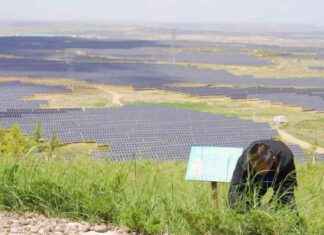The environment In Flanders disappears, on average, 6 hectares of open space per day under the concrete, and it is the last few months, even faster. That allows the Flemish nature and milieubeschermingvereniging Natuurpunt stuck in his overview of fauna and flora in Flanders 2018.
Natuurpunt has the figures for the first time at branch level, calculated and compiled in a betonrapport. It seems that many municipalities still do a little to bijsteken to the betonstop in 2040 to be able to achieve. The concreting over of open space is at odds with the climate challenges that lie ahead, and it leads to a further fragmentation of nature in Flanders. the
That fragmentation is, according to Natuurpunt, the main cause of the high number of animals under the wheels: the most notable victim this year was a young wolf, who also was in Opoeteren.
Read also During attach the gps burst the hell loose for the birds in our country : radar images show how massive news To a lot of nitrogen
Many areas in Flanders are also a lot of nitrogen all over him, is evident also from the annual review. It comes to 95 percent of the meadows and moors and 70 percent of the dunes, deciduous woods and sweet waters That would come by the agriculture, transport and industry. the
The impact is subtle, but therefore not less dangerous. Nitrogen acts as a poison that slowly the whole ecosystem is affected. In forests on poor, sandy soil, the number of sparrow hawks backwards, snails disappear by a shortage of calcium, and therefore also birds like the song thrush which snails eat.
Empty nest
the lapwing got it this year, hard to endure. Less than 1 in 10 kievitnesten is successful, reports Natuurpunt. The landbouwvogels strokes there was hardly any in to nest in the ever more intensively fertilized and processed agricultural landscape. Climate change, with extremes of dry to wet for years, which makes it all even harder.






